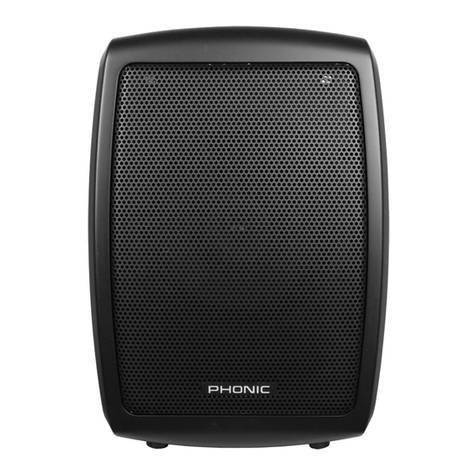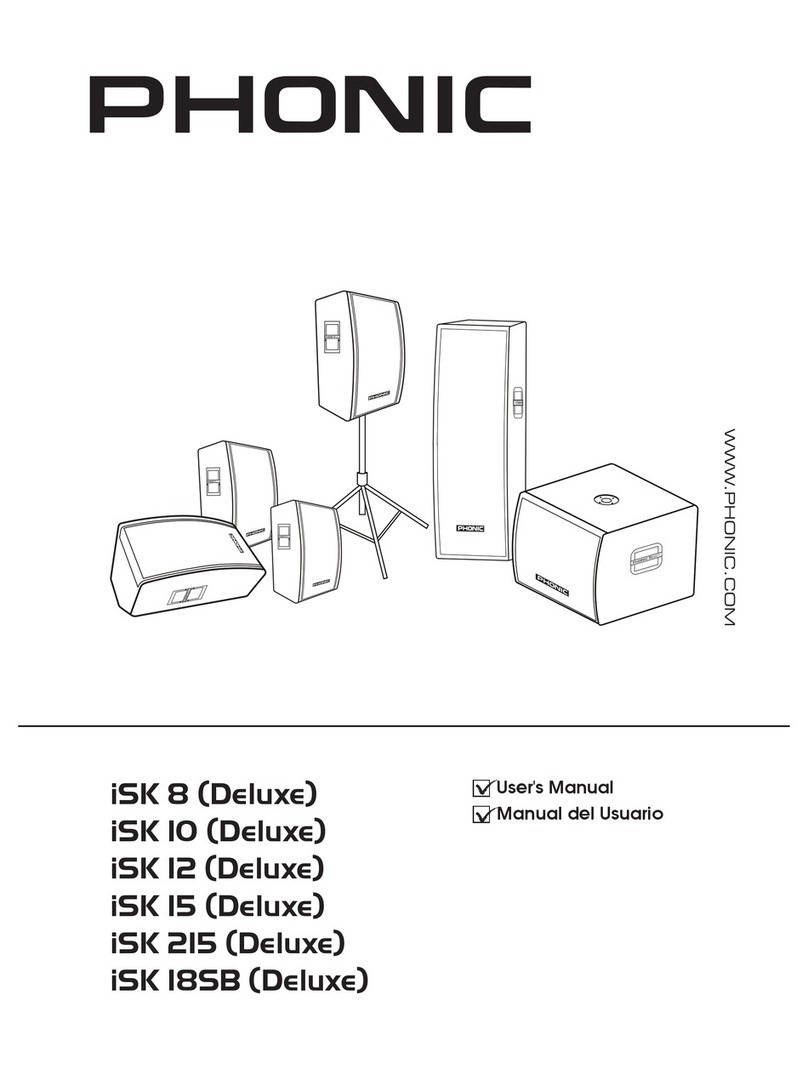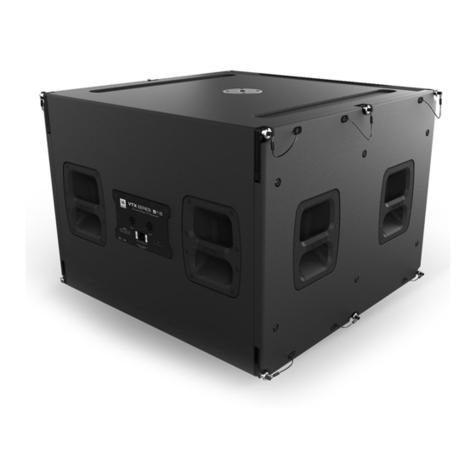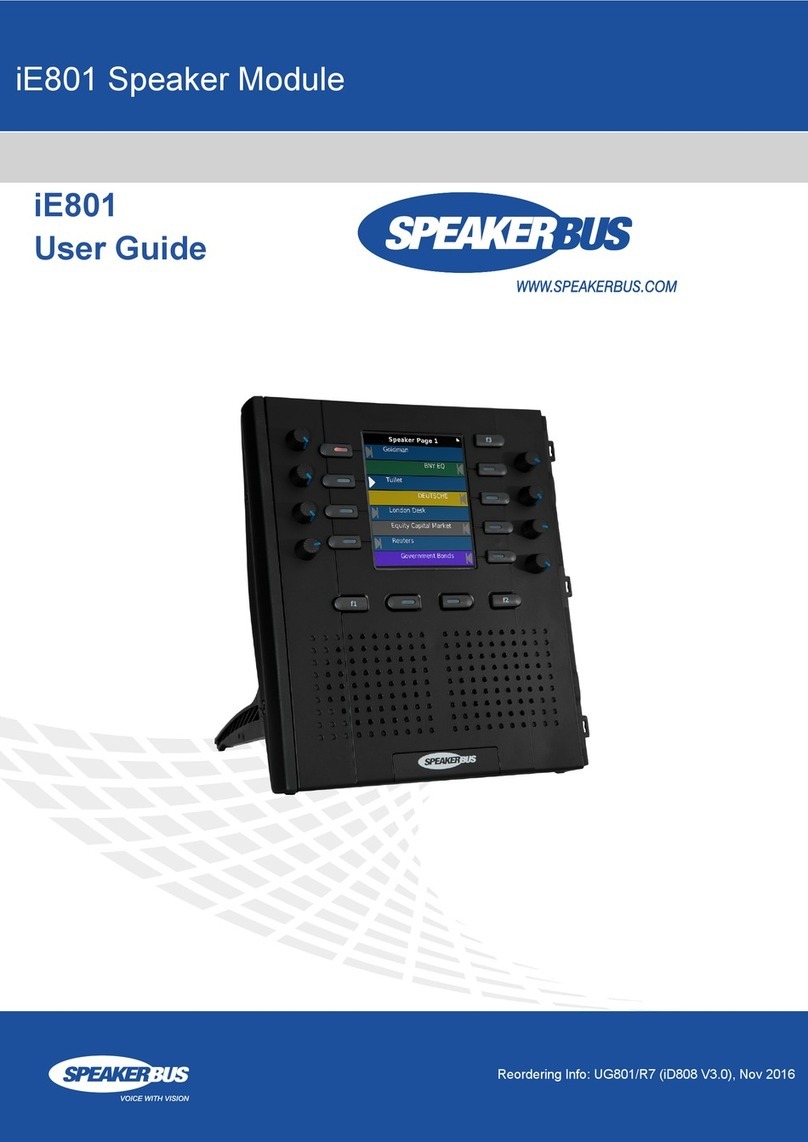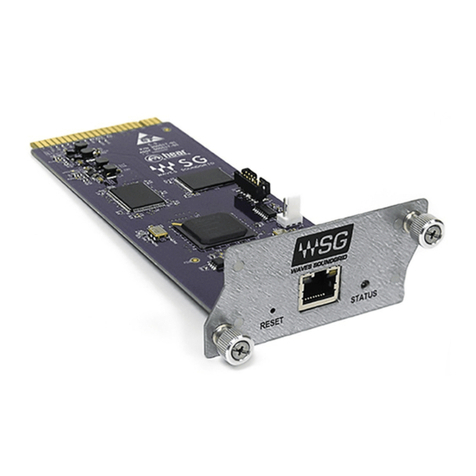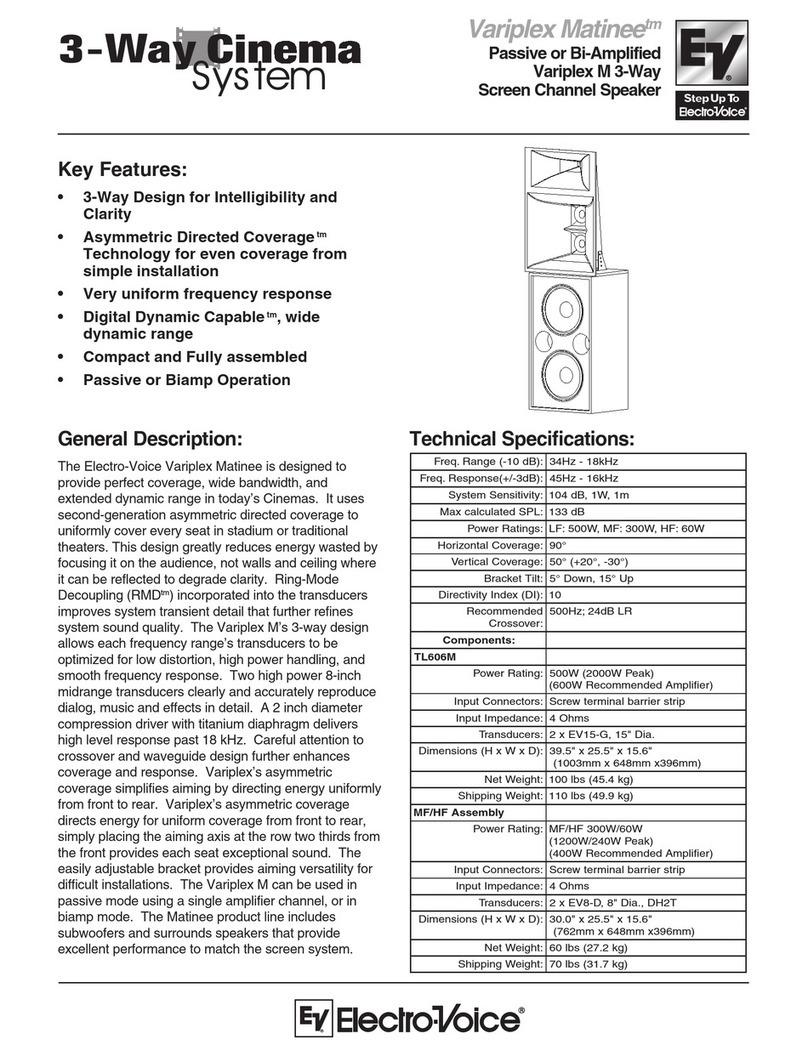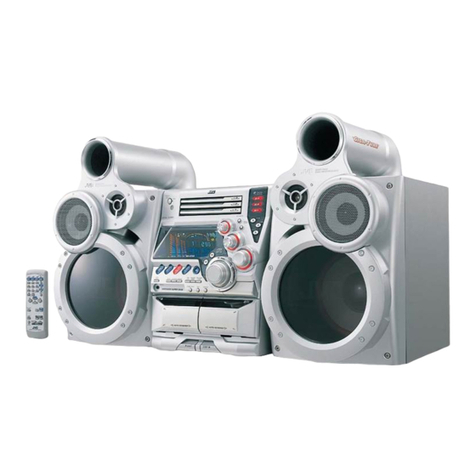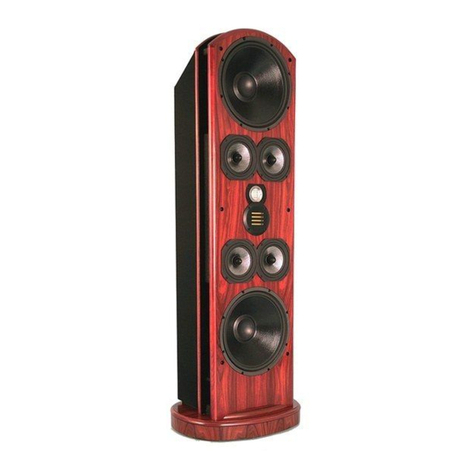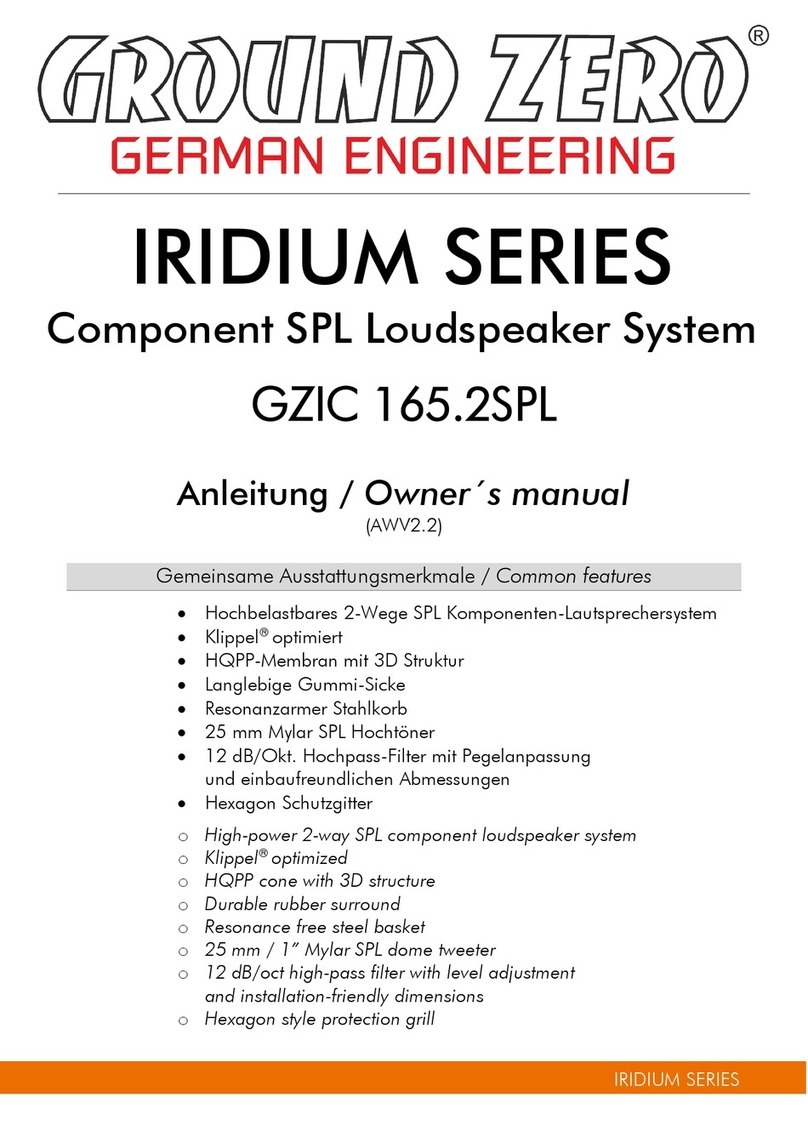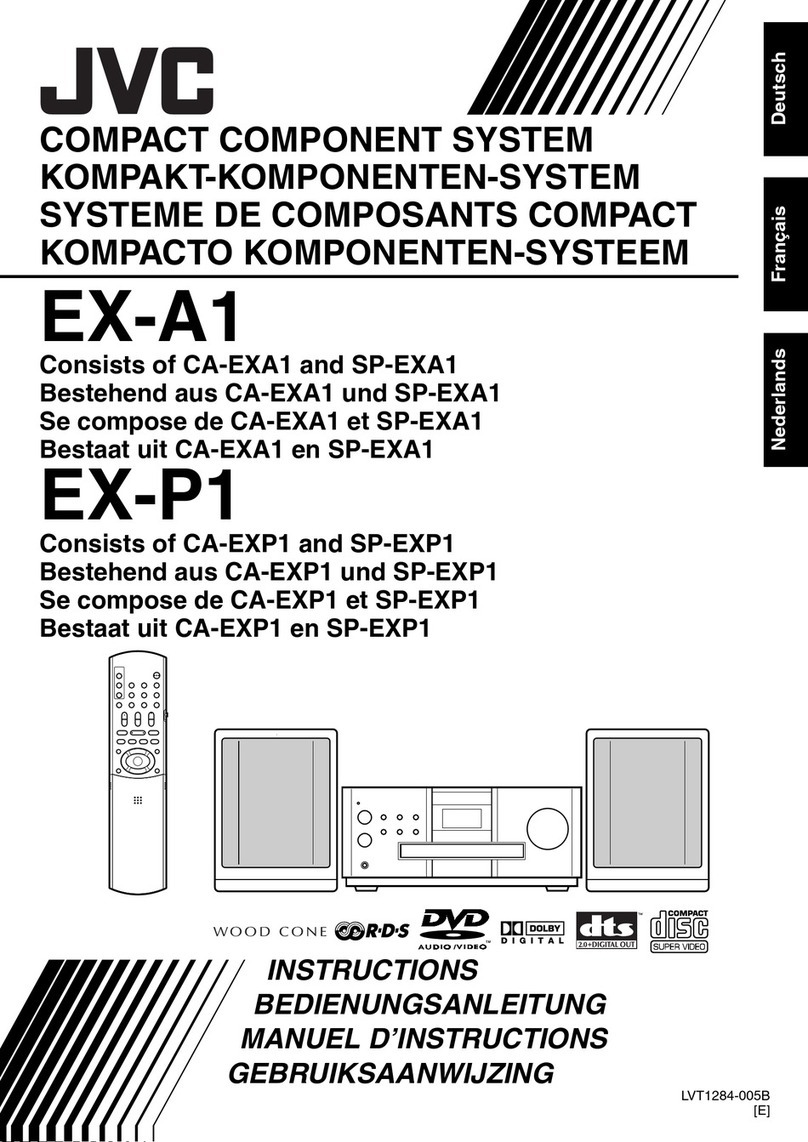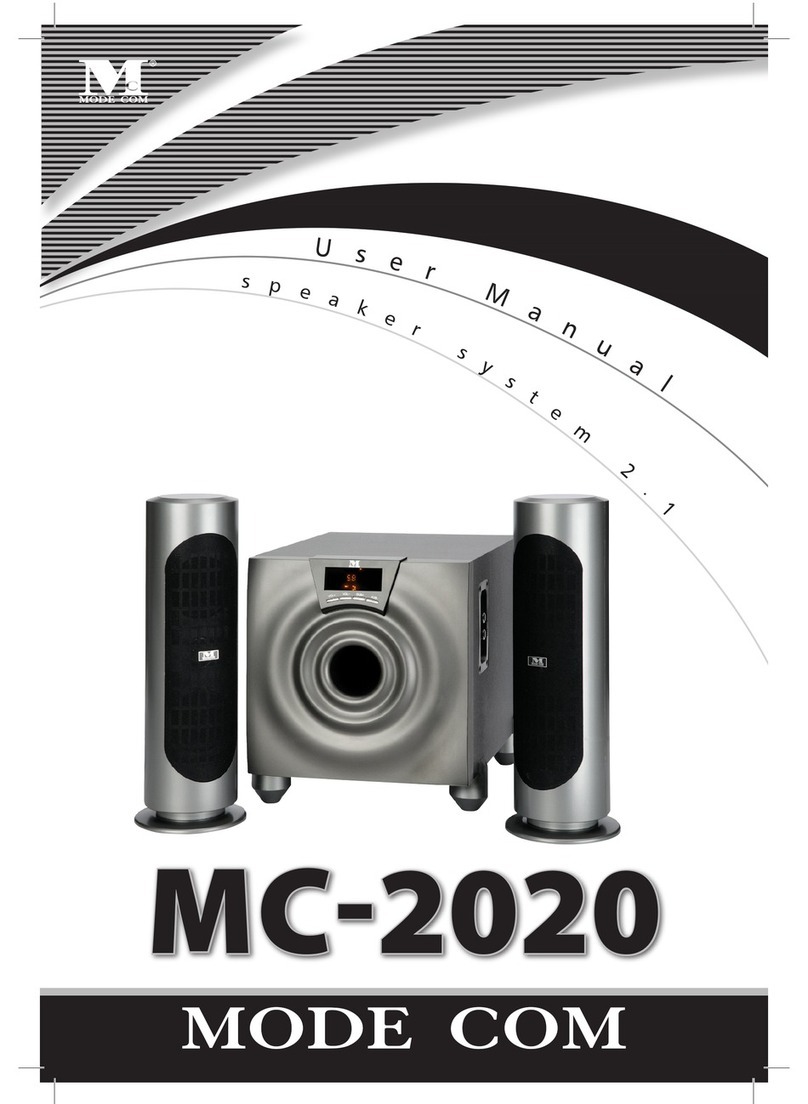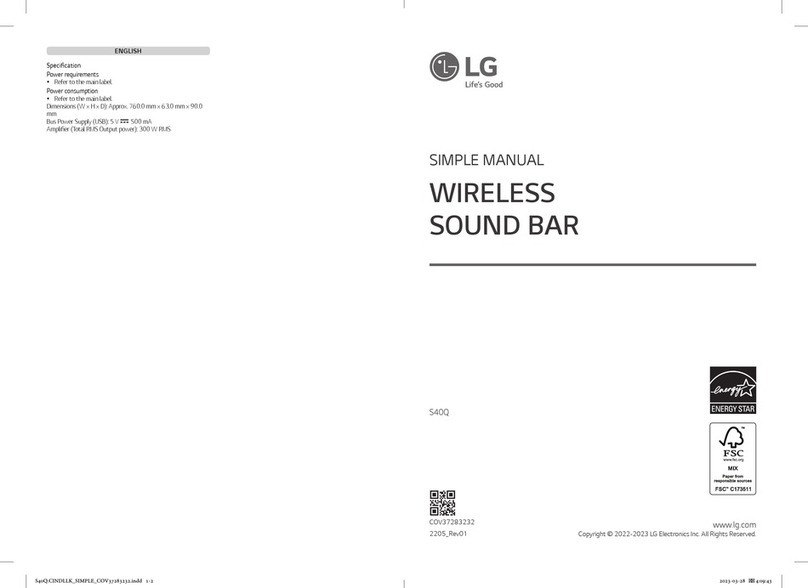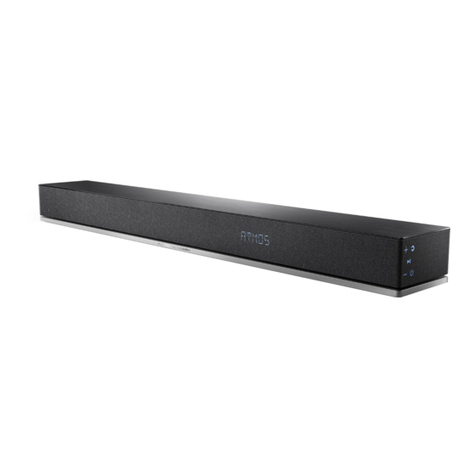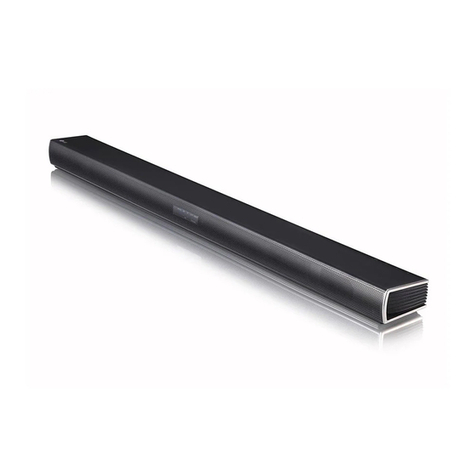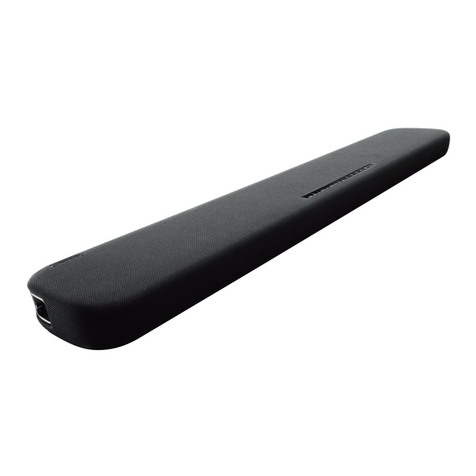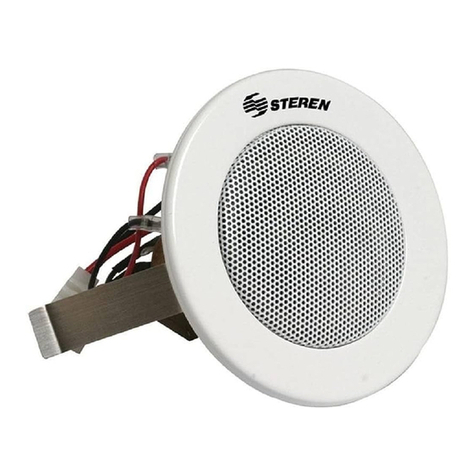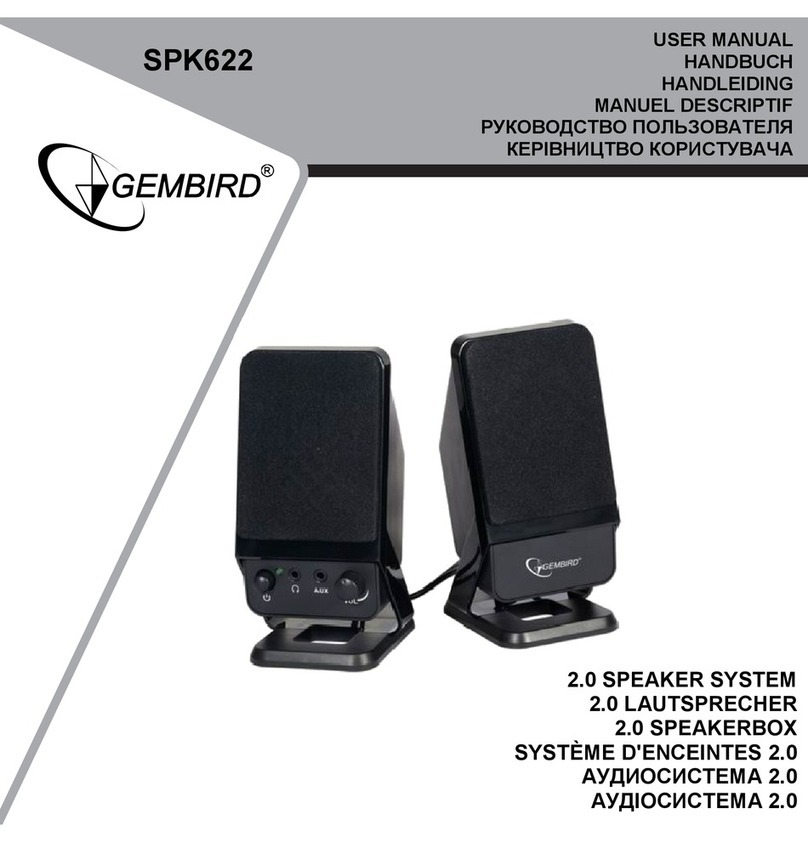Phonic SAFARI 3000 User manual

English Deutsch Español Français Português 日本語 简体中文
User's Manual
Benutzerhandbuch
Manual del Usuario
Mode d'emploi
Manual do Usuário
取扱説明書
使用手册
SAFARI 3000

320 Watt All-In-One Portable PA System
Sistema PA Portable Todo en Uno 320 Watt
320W 可携式专业音响系统
English Deutsch Español Français Português 日本語 简体中文
ENGLISH .....................................I
ESPAÑOL .....................................II
简体中文 ....................................III
V1.0 11/08/2011
SAFARI 3000

English Deutsch Español Français Português 日本語 简体中文
3Safari 3000
Introduction 1
Advanced Electronics. Advanced Reliability 1
Features 1
Included Components 1
Optional Components 1
Front View 2
Rear View 2
Applications 3
Power-Related Instruction 4
Replacing the Batteries 4
Installing the WR-1 Safari Wireless Receiver Modules 4
Operating Safari’s Wireless System 4
Transmitter Components 5
Installation of Safari CD/USB or USBR-1 6
Specications 8
Wireless Specications 9
APPENDIX
Dimensions 1
CONTENTS
USER'S MANUAL
Phonic preserves the right to improve or alter any information within this
document without prior notice

4
English Deutsch Español Français Português 日本語 简体中文
Safari 3000
1. Read these instructions before operating this
apparatus.
2. Keep these instructions for future reference.
3. Heed all warnings to ensure safe operation.
4. Follow all instructions provided in this document.
5. Do not use this apparatus near water or in locations
where condensation may occur.
6. Clean only with dry cloth. Do not use aerosol or liquid
cleaners. Unplug this apparatus before cleaning.
7. Do not block any of the ventilation openings. Install
in accordance with the manufacturer
’
s instructions.
8. Do not install near any heat sources such as radiators,
heat registers, stoves, or other apparatus (including
.
9. Do not defeat the safety purpose of the polarized or
grounding-type plug. A polarized plug has two blades
with one wider than the other. A grounding type plug
has two blades and a third grounding prong. The wide
blade or the third prong is provided for your safety. If
the provided plug does not into your outlet, consult
an electrician for replacement of the obsolete outlet.
10. Protect the power cord from being walked on or
pinched particularly at plug, convenience receptacles,
and the point where they exit from the apparatus.
11. Only use attachments/accessories by the
manufacturer.
12. Use only with a cart, stand, tripod, bracket, or
table by the manufacturer, or sold with
the apparatus. When a cart is used, use caution
when moving the cart/apparatus
combination to avoid injury from tip-
over.
13. Unplug this apparatus during lighting
storms or when unused for long
periods of time.
14. Refer all servicing to service personnel.
Servicing is required when the apparatus has been
damaged in any way, such as power-supply cord or
plug is damaged, liquid has been spilled or objects
have fallen into the apparatus, the apparatus has
been exposed to rain or moisture, does not operate
normally, or has been dropped.
IMPORTANT SAFETY INSTRUCTIONS
CAUTION: TO REDUCE THE RISK OF ELECTRIC SHOCK,
DO NOT REMOVE COVER (OR BACK)
NO USER SERVICEABLE PARTS INSIDE
REFER SERVICING TO QUALIFIED PERSONNEL
The lightning flash with arrowhead symbol, within an
equilateral triangle, is intended to alert the user to the
presence of uninsulated
“
dangerous voltage
”
within the
product
’
magnitude to constitute a risk of electric shock to persons.
The exclamation point within an equilateral triangle is in-
tended to alert the user to the presence of important operat-
ing and maintenance (servicing) instructions in the literature
accompanying the appliance.
WARNING: To reduce the risk of or electric shock, do
not expose this apparatus to rain or moisture.
CAUTION: Use of controls or adjustments or performance
of procedures other than those may result in
hazardous radiation exposure.
The apparatus shall not be exposed to dripping or splashing and that no objects with liquids, such as vases,
shall be placed on the apparatus. The MAINS plug is used as the disconnect device, the disconnect device shall
remain readily operable.
Warning: the user shall not place this apparatus in the area during the operation so that the mains switch
can be easily accessible.
CAUTION
RISK OF ELECTRIC SHOCK
DO NOT OPEN

English Deutsch Español Français Português 日本語 简体中文
1Safari 3000
Introduction
Congratulations on purchasing the Safari 3000, Phonic’s latest
all-in-one, battery-powered sound solution. Powered by advanced
class D ampliers that deliver a commanding 320 Watts, the
Safari 3000 can reach crowds of 1,500+ people with a max SPL
of 115dB. At a lightweight 16kg, the Safari 3000 is designed for
excellent portability. With its retractable metal handle, wheels, and
integrated microphone storage, transporting the Safari 3000 is a
breeze. The Safari’s rugged polymer body, rounded corners, and
internal bracing system maximize structural strength, allowing the
Safari to withstand heavy use.
Safari’s electronic circuitry, including the amplier, battery, and
power supply are state-of-the-art. The efcient battery system can
operate 7-10 hrs on a full charge and the quick recharge circuitry
recharges in less than 8hrs. The onboard 3-channel mixer has
versatile input options, including Neutrik combo jacks accepting
XLR and TRS phone jacks, 1/8” mini stereo, and RCA. Sound
expansion is especially easy with the Safari 3000. Up to two
passive companion speakers can be added through its powered
Speakon jack. Finally, options such as Phonic’s auto-scan wireless
microphones, CD/USB player & recorder, and USB recorder give
users the exibility to customize the Safari 3000 into a perfectly
tailored solution. So whether you are a street vendor, a musician,
a teacher, or a business professional, the rugged, versatile, and
powerful Safari 3000 is your ultimate portable system.
Advanced Electronics. Advanced Reliability
Phonic engineers designed the Safari 3000 for maximum
reliability and durability. As of the launch date, the Safari’s power
supply, amplier, and battery circuitries have endured over 1000
hours of real world and lab tests, guaranteeing a remarkable
level of reliability. From heated ovens, freezing subzero rooms,
high humidity chambers, rigorous drop tests, to electrical
voltage spikes, the Safari has seen it all.
Features
• Ultra-durable & lightweight (16kg) all-in-one battery powered
sound solution
• 320 Watt Class D amplier technology
• Maximum SPL of 115dB reaches crowds of 1,500+ people
• Impact resistant polymer enclosure with internal bracings
• 1'' pure titanium tweeter and 10'' woofer
• Flat frequency response between 50Hz – 18kHz
• Metal retractable handle and wheels for excellent portability
• 3-Channel onboard Mixer: Dual combo jacks (XLR & ¼''), RCA,
and mini stereo
• Advanced wireless microphone system with auto-scan fre-
quency nder
• Add up to two passive companion speakers with the powered
Speakon jack
• 7-10 hour operation time on fully charged batteries
• Battery protection circuitry protects batteries during storage
• Tone control and echo reverb effects
• 4-Segment battery status indicator
• “Voice-priority” music ducking feature
• Integrated microphone storage slots
• All-in-one CD player and MP3 player/recorder (option)
Included Components:
• Safari 3000 unit with 2 lead-acid batteries installed
• AC power cable
• User’s manual
Optional Components:
• CD/USB Player and recorder with remote control
• USBR-1 USB player and recorder with USB connector
• WM-1S wireless handheld microphone system
• WL-1S wireless lavalier microphone system
• WH-1S wireless headset microphone system
• Safari 3000P passive expansion speaker

2
English Deutsch Español Français Português 日本語 简体中文
Safari 3000
Front View
1. Retractable Handle: Durable retractable metal handle
2. Fixed Metal Handle: Top-mounted metal handle
3. High Frequency Speaker: 1” pure titanium compression horn
4. Low Frequency Speaker: 10” custom-tuned paper/ber
composite woofer
5. Speaker Grille: 1.3 mm power-coated steel grille
Rear View
1. Microphone Storage Compartment
Two handheld microphones can be stored inside the integrated
storage compartment.
2. One-Touch Auto-Scan Wireless Microphone Receiver
Modules
Two wireless modules can be installed in the Safari 3000.
3. Safari CD/USB and USBR-1 Modules
Optional CD/USB or USBR-1 modules can be installed onto the
Safari 3000.
4. Channel Volume Controls
Channels 1 through 3 each have dedicated level controls.
5. Neutrik Combo Jacks
Neutrik combo jacks accept both balanced and unbalanced signals
from XLR and ¼” TRS connectors.
6. RCA Input
The RCA input is ideal for connecting iPods, CD/DVD players,
and blu-ray players.
7. Mini Stereo Input
The 1/8” mini stereo jack is identical to those used by portable CD
player, iPod and other MP3 players.
8. Voice Priority
When activated, the voice priority circuitry automatically detects
signals from the microphone inputs and reduces volume from
line inputs as necessary. Voice priority reduces volume from
Channel 3 and the optional CD player, giving priority to microphone
Channels 1 & 2.
9. RCA Output
The RCA output sends the Safari’s combined output signal to
external devices like tape recorders, mp3 recorders or external
mixers.
10. Powered Speakon Output (4 Ohm Minimum Load)
The Safari 3000’s Speakon output powers up to two 8ohm passive
companion speakers (Safari 3000P). Warning: Note the minimum
4 ohm load for this connection.
11. Master Volume Control
Master volume controls the summed output level of the Safari.
2
1
1
2
3
3
4
5
4
5
98
10
19 18
20
17
15
16
14
7
13
12
116

English Deutsch Español Français Português 日本語 简体中文
3Safari 3000
12. EQ
Turn counter-clockwise to increase the bass response while
simultaneously lowering the treble response. Turning clockwise
will increase the treble response while reducing the bass.
13. Echo Reverb Effect
Turning this rotary control to the right gradually increases the
amount of echo-reverb added to the output
14. Battery Status Indicators
The Safari 3000’s 4-segment battery LEDs display battery
status.
15. DC Power Input
As an alternative to AC power, the DC input powers the Safari
and charges internal batteries through DC power (DC 24V ~ 32V).
When recharging the battery, ensure that the Battery Power and
Charging switch is in the ON position.
16. Power Switch
Use this switch to turn the Safari 3000 on.
17. AC Power Input
A standard AC power connector powers and charges the Safari 3000.
18. Battery Power and Charging Switch
This switch activates the connection between the Safari and its
internal batteries. Please place switch in the OFF position if you
do not plan on using the Safari for more than ve days. Before
placing the Safari 3000 into storage, remember to fully charge
the batteries and place the Battery Power and Charging switch
into the OFF position.
19. Battery Compartment
The rechargeable Lead-Acid batteries are kept within this
compartment.
20. Wheels
The Safari features durable metal hub wheels.
Standard 35mm pole mount Convenient retractable handle
and wheels Expandability: Add up to 2 passive
companion speakers (Safari 3000P)
+ +
Applications

4
English Deutsch Español Français Português 日本語 简体中文
Safari 3000
+
-
+
-
12VDC
12VDC
Power-Related Instruction
AC Power
The Safari’s universal switching power operates between 90VAC ~
265 VAC. Connect theAC power cord and turn on power.AC power
supplies electricity to unit itself as well as to the internal batteries.
You may operate unit and charge the batteries simultaneously.
DC Power 24V ~ 32V
There are 2 ways to use DC power -- through a DC adaptor
or through the Safari’s internal DC batteries. On fully charged
batteries, the Safari can operate continuously for 7 to 10 hours in
standby mode (CD/USB player and two receivers are turned on).
Battery Status LEDs
Note: To use the Safari’s internal batteries, ensure that the Battery
Power and Charging switch is in the ON position. If the battery
wires are disconnected or if the Battery Power and Charging switch
is OFF, you may still use the unit in AC power mode, but note that
the four battery indication LEDs will blink continuously.
There are four segment LEDs above the Power LED-Blue to
indicate the batteries status:
• 100% - Green
• 75% - Green
• 50% - Yellow
• 25% - Red
Replacing the Batteries
Depending on frequency and duration of use, the Safari’s batteries
may need to be replaced every few years. Please contact your
Phonic dealer / distributor for replacement batteries.
To replace the internal batteries, you will only need a Phillips
screwdriver. Please follow the following instructions. We
recommend that an authorized Phonic repair facility or dealer/
distributor carryout the steps below:
1. Unplug all power cables and ensure the power switch and the
Battery Power and Charging switch are off
2. Using a Phillips-head screwdriver, remove the two screws at
the top of the metal battery compartment cover
3. Remove the battery cover
4. Remove the batteries from the compartment and detach the
battery cables
5. Connect the new batteries to the detached cables and place
into the compartment
6. Replace the battery compartment cover and screw into place
Note: Batteries should be fully charged if the Safari 3000 will
be stored or unused for a prolonged period of time. Prior to
storage, ensure that the Battery Power and Charging Switch
is in the OFF position. Phonic recommends that customers
charge batteries at least once a month for at least 12 hours
when the Safari 3000 is not in use.
Installing the WR-1 Safari Wireless Re-
ceiver Modules
We recommend that an authorized Phonic repair facility or dealer/
distributor carryout the steps below:
1. Remove all power cables and turn the Safari 3000 off.
2. Unscrew the protective faceplate on the wireless receiver slots
and remove it.
3. Place the WR-1 into an available wireless slot and push the
WR-1 into the slot until the WR-1 faceplate is ush with the
back panel.
4. Screw the WR-1 into place.
Operating Safari’s Wireless System
One-Touch Auto Scan
1. Power-on the Safari One-Touch Autoscan wireless receiver
(WR-1) by turning the volume knob clockwise. You should hear
a click sound from the knob.
2. Power-on your handheld microphone (WM-1) or beltpack unit
(WB-1)
3. Hold the WM-1 / WB-1 close against the receiver WR-1 and
push the Scan button on the WR-1 for 4 to 5 seconds until the
numeric channel LED digits start to automatically change, indi-
cating that the autoscan is nding the best wireless channel.
4. The autoscan process is nished when the LED display stops
at the optimal channel. At this point, the RF LEDs will activate.
If the RF LEDs on the WR-1 do not light on, the connection has
not been established successfully. To reinforce the connection,
click the Lock button while holding the WM-1 or WB-1 close to
the receiver.
5. Upon a successful connection, the AF LEDs on the WR-1 will
activate as you speak into the microphone.
WB-1
UHF
Power Switch/Volume Knob
Volume Gain
Noise Status
Communication Status
Infrared
Auto Scan Button
Frequency Band Lock Button Channel LED

English Deutsch Español Français Português 日本語 简体中文
5Safari 3000
Transmitter Components
Beltpack Handheld Microphone
lavalier
WB - 1
UHF
Headset
WB - 1
UHF
Manual Scan
1. Power-on the Safari One-touch Autoscan wireless receiver
(WR-1) and the microphone transmitter (WM-1 or WB-1).
2. Push the Scan button on the WR-1 for 2 seconds. The numeric
LEDs on the WR-1 will begin to blink. To manually select fre-
quency, continue to click the Scan button until you reach the
desired channel.
3. Hold the WM-1 / WB-1 close against the receiver and push
the Lock button to conrm the channel and establish the link
between the microphone transmitter and receiver. At this point,
the RF LEDs will activate and the AF LEDs will respond to the
microphone signal. If the connection is not established, reat-
tempt the manual or autoscan process.
WB-1
UHF
Antenna Power Switch
Headset / lavalier mic jack
Power Status
Infrared
Power Switch
Battery Compartment

6
English Deutsch Español Français Português 日本語 简体中文
Safari 3000
1 3
7 9 10 1112
1
8
912
13
1514
16
2
3
4
5
6
7
13
5 64
8
2
10 11
1 3
7 9 10 1112
1
8
912
13
1514
16
2
3
4
5
6
7
13
5 64
8
2
10 11
+1 2V
GN D
L- CH
S- GN D
R- CH
L- CH
S- GN D
R- CH
AU X IN
Installation of Safari CD/USB or USBR-1
We recommend that an authorized Phonic repair facility or dealer/
distributor carryout the steps below:
1. Remove all power cables and turn the Safari 3000 off.
2. Unscrew the protective faceplate on the Safari and remove it.
3. Find the cables taped just within the hole left after removing
the faceplate
4. Connect cables to the connectors at the rear of the optional player
5. Insert the player into the Safari and screw into place using the
screws removed from the protective faceplate
Optional CD/USB Player and Recorder
1. CD Slot: Insert a compact disc into this slot. This CD player
can accept either audio CDs or CD-Rs containing MP3 les.
2. Power/Volume Knob: Push this button to start the unit, after
that user can adjust the volume by roll the knob.
3. Play/Pause Button: Push this button to begin playback and
again to pause. This button is also used to pause and begin
recording.
4. Reverse/Cue Buttons: Push either of these buttons to skip
to the previous track (rev) or to cue the next track (cue). Hold
either of them down to fast-forward (cue) or reverse (rev)
through the currently playing track. These buttons also allow
for users to scroll through menus.
5. Stop Button: This button will stop the currently playing or
recording track.
6. Eject Button: Pushing this button will eject the disc within the
CD slot.
7. Function Button: Users can select from CD mode, USB mode
or SD/SDHC card mode.
8. Folder Buttons: Push these buttons to skip backwards and
forwards alphabetically through folders found on CD, USB or
SD/SDHC card.
9. Repeat Button: Push this button to scroll through the different
repeat modes that the CD player offers. Users can opt to play
all tracks, repeat one track only, repeat the entire folder, repeat
all, play all randomly.
10.Find Button: Push this button once to enable search by FILE.
Push it twice to search by ALBUM. Push and hold to view the
track; push a second time to view the ID3 tag.
11.Record/Delete Button: Push this button to initiate record mode
when set to USB or SD/SDHC mode. Recording will begin in
pause mode, and users can push the play/pause button to
begin recording. When this button is pushed during CD mode,
this will activate encoding of the current track. Push the stop
button to stop encoding. Push and hold this button to start
delete mode. Use the reverse/cue buttons to select the folder
and le you wish to delete, and push and hold the button once
again to conrm deletion.
12.SD/SDHC Card Slot: Insert an appropriately formatted SD
or SDHC card into this slot for recording or playback of audio
les.
13.USB Connector: Connect your USB ash drives here. Flash
drives can be used to record to or for playback of MP3 or WMA
les.
Note: Phonic recommends that SD, SDHC and USB media is
formatted as FAT-32 for best results.
CD Remote
1. Power Button: Activate and deactivate the Safari’s CD player
using this button.
2. Play/Pause Button: Push this button to begin playback and
again to pause. Pushing the button a third time will resume
playback from the point at which the audio was paused. This
button is also used to pause and begin recording.
3. Stop Button: This button will stop the currently playing or
recording track.
4. Program Button: Push this button to access “program”
mode to program track order. Push stop to clear programmed
tracks.

English Deutsch Español Français Português 日本語 简体中文
7Safari 3000
5. Find Button: Push this button once to enable search by FILE.
Push it twice to search by ALBUM. Push and hold to view the
track; push a second time to view the ID3 tag.
6. ESP Button: Push this button to activate anti-shock mode
when CDs are in use. The anti-shock time is approximately
40 seconds. Push this button again to deactivate anti-shock
mode.
7. Reverse/Cue Buttons: Push either of these buttons to skip
to the previous track (rev) or to cue the next track (cue). Hold
either of them down to fast-forward (cue) or reverse (rev)
through the currently playing track. These buttons also allow
for users to scroll through menus.
8. Folder Buttons: Push these buttons to skip backwards and
forwards alphabetically through folders found on CD, USB or
SD/SDHC medium.
9. Repeat Button: Push this button to scroll through the different
repeat modes that the CD player offers. Users can opt to play
all tracks, play tracks randomly, repeat one track only, repeat
the entire folder, repeat all and random repeat. When in CD
mode it will allow you to select between random, repeat track,
repeat all and random repeat.
10.Display Button: This button will switch through the various
display modes. Available modes are: track number and play
time; total number of songs; name of current song, and; total
number of songs and folders.
11.Record/Delete Button: Push this button to initiate record mode
when set to USB or SD/SDHC mode. Recording will begin in
pause mode, and users can push the play/pause button to
begin recording.
12.Function Button: Push this button to scroll through the dif-
ferent operation modes of the Safari’s CD player. Users can
select from CD mode, USB mode or SD/SDHC card mode.
13.Eject Button: When no track is playing or recording, pushing
this button will eject the disc within the CD slot.
14.Mute Button: Push this button to mute the currently playing
track.
15.VOL Buttons: These buttons allow users to increase and
decrease the CD player’s volume.
16.0 – 9 Buttons: Enter the track number you wish to play to skip
directly to it.
USB Recorder/Player (USBR-1)
1. Record Button: Push and hold this button for 2 seconds to
initiate recording.
2. Play/Pause Button
: Push this button to begin playback and
again to pause. This button is also used to pause and begin
recording. This button is also used as an ‘enter’ button when
navigating menus.
3. Reverse/Cue Buttons
: Push either of these buttons to skip
to the previous track (rev) or to cue the next track (cue). Hold
either of them down to fast-forward (cue) or reverse (rev)
through the currently playing track. These buttons also allow
for users to scroll through menus.
4. Stop/Menu Button
: This button will stop the currently playing
or recording track. Keep pushing this button will bring up the
main menu where users can set repeats or delete les. This
button also works as a ‘back’ or ‘cancel’ button when navigating
menus.
5. USB Connector
: Connect your USB ash drives here. Flash
drives can be used to record to or for playback of MP3 or WMA
les.
6. Display: This screen will show the USBR-1’s current status
and le properties.
7. Power/Volume Control: This rotary control adjusts the outgoing
signal level when playing back audio les from the USBR-1
module. It also allows you to turn the module on and off. To
change the on/off status of the module, simply push in the
control. Turn it to the right to increase the volume and to the
left to reduce the volume.
Playback of Files
After connecting a USB ash drive the USBR-1 will take a few
seconds to read les on the disc. Users can then navigate either
les recorded by the USBR-1 (“Recorded”) or their own MP3 or
WMA les (“Files”). Within the Files menu, directories are indicated
by an “F” icon while les are indicated by a musical note. Press
Play/Pause to play a track.
Playback Display
During playback the screen will show the following properties:
File Type (MP3 or WMA), Sample Rate, Status (Play or Pause),
Time (Minutes and Seconds) and Track Details (Name, Artist
and Album).
Repeat Mode
To activate repeat for playback, push and hold the Stop/Menu
button and select the Repeat option. There are four repeat
options available: No Repeat, Repeat One, Repeat All or Repeat
Directory.
Recording an MP3
Push and hold the Record button for 2 seconds to start recording.
Recording will begin in pause mode. Push the Play/Pause button
to begin recording. Push the Stop/Menu button to nalize the
recording. Do not remove your USB media when the screen
displays “READING” as the USBR-1 is writing your le to the USB
drive. Files will be recorded in MP3 format at 192 kbps sampling
rates by default.
Changing to Recording Bitrate
Push and hold the Record button for 4 to 5 seconds to enter the
sample rate menu. When you do so, the two available sample
rates will appear on screen: 128 kbps and 192 kbps. Push the
record button again to swap the sampling rate.
Deleting a File
Whenever a le is highlighted users can push and hold the Stop/
Menu button for 4 seconds to access the menu. Use the cue button
to scroll down to “DELETE” and push the Play/Pause button to
accept. Press the Play/Pause button again to conrm deletion or
the Stop/Menu button to decline.
2
3
15 6
7
4

8
English Deutsch Español Français Português 日本語 简体中文
Safari 3000
Specications
SAFARl 3000
Amplier Technology Class D X 2
Amplier Wattage 320Watt Peak/160Watt RMS<o.1%THD
Power Supply Technology Universal switching power 90V~265V
Woofer 10” woofer paper/ber composite
Tweeter 1”pure titanium compression horn
Frequency Response(-6dB) 50-18 kHz
EQ Tone
EFX Echo reverb
Input 3 CH Mixer:2 x Combo(XLR/TRS),RCA,mini-stereo
Output RCA
Speakon powered output for up to two 8ohm expansion speakers
Battery Indicator 4-Segment LED
Crossover Precision tuned crossover
Ducking/Voice Priority Yes, with on/off Switch
Wheeled Metal hub wheels
Body Material Impact resistant polymer. Internal bracing system.
Wireless Microphone Technology Auto scanning frequency nder technology
Battery Lead acid 12V 5Ah
Battery Operation Time 7-10 hour run time. Fast charge. Battery protection switch
Mic Storage Compartment Internally integrated
Dimensions(HxWxD) 553x350x333 mm/21.8x13.8x13.1 in
Weight 16kg / 35lbs
Grille 1.3mm power coated steel

English Deutsch Español Français Português 日本語 简体中文
9Safari 3000
Wireless Specications
Wireless Transmitter Specications
WM-1 (Handheld Transmitter) WB-1 (Beltpack Transmitter)
Frequency Range (Selectable) 500-875MHz (Selectable) 500-875MHz (Selectable)
Housing Material ABS ABS
Bandwidth 25MHz 25MHz
Spurious Emissions <-55dBc <-55dBc
Max. Deviation Range ±68KHz ±68KHz
Maximum Input Level 148dB SPL 148dB SPL
Battery AA×2 Alkaline, >12hr battery life AA×2 Alkaline, >12hr battery life
Notes Please work with your sales representative to select the optimal frequency for your region
Wireless Receiver Specications
WR-1 (Wireless Receiver)
Frequency Range (Selectable) 500-875MHz (Selectable)
Oscillation Mode PLL synthesized
Bandwidth 25MHz
Preset Channels 16 Non-interference channels
Receiving Mode CPU-controlled diversity technology
Squelch Control Optimized automatic squelch control
Display Channel display LED, 4 LED RF display, 4 LED AF display
Sensitivity 6dBμV, at S/N>80dB
Max. Deviation Range ±60KHz
Spurious Emissions <80dB
Frequency Response 50Hz~16KHz
S/N Ratio >100dBA
T.H.D. <0.5% @ 1KHz (Dev.=40KHz)
AF Output 300mV rms
Power Supply DC 12~15V
Current Consumption <190 mA
Working Temperature -10~60℃
Notes Please work with your sales representative to select the optimal frequency for your region

10
English Deutsch Español Français Português 日本語 简体中文
Safari 3000
SERVICE AND REPAIR
For replacement parts, service and repairs please contact the Phonic distributor in your
country. Phonic does not release service manuals to consumers, and advice users to not
attempt any self repairs, as doing so voids all warranties. You can locate a dealer near you at
http://www.phonic.com/where/.
WARRANTY INFORMATION
Phonic stands behind every product we make with a no-hassles warranty. Warranty coverage
may be extended, depending on your region. Phonic Corporation warrants this product for a
minimum of one year from the original date of purchase against defects in material and
workmanship under use as instructed by the user’s manual. Phonic, at its option, shall repair
or replace the defective unit covered by this warranty. Please retain the dated sales receipt as
evidence of the date of purchase. You will need it for any warranty service. No returns or repairs
will be accepted without a proper RMA number (return merchandise authorization). In order to
keep this warranty in effect, the product must have been handled and used as prescribed in the
instructions accompanying this warranty. Any tampering of the product or attempts of self repair
voids all warranty. This warranty does not cover any damage due to accident, misuse, abuse,
or negligence. This warranty is valid only if the product was purchased new from an authorized
Phonic dealer/distributor. For complete warranty policy information, please visit
http://www.phonic.com/warranty/.
CUSTOMER SERVICE AND TECHNICAL SUPPORT
We encourage you to visit our online help at http://www.phonic.com/support/. There you can find
answers to frequently asked questions, tech tips, driver downloads, returns instruction and other
helpful information. We make every effort to answer your questions within one business day.
FCC Caution: To assure continued compliance, any changes or modifications not expressly
approved by the party responsible for compliance could void the user's authority to operate this
equipment. (Example - use only shielded interface cables when connecting to computer or
peripheral devices).
THIS DEVICE COMPLIES WITH PART 74 OF THE FCC RULES. This equipment complies with
FCC RF radiation exposure limits set forth for an uncontrolled environment.
http://www.phonic.com

11
English Deutsch Español Français Português 日本語 简体中文
Safari 3000
CONTENIDO
Manual del Usuario
Phonic se reserva el derecho de mejorar o alterar cualquier información provista
dentro de este documento sin previo aviso.
Introducción 1
Electrónica Avanzada. Fiabilidad Avanzada. 1
Carácterísticas 1
Componentes Incluidos 1
Componentes Opcionales 1
Vista Frontal 2
Vista Posterior 2
Aplicación 3
Energía-Instrucción Relacionada 4
Remplazando la Batería 4
Instalando los Módulos Recibidores Inalámbricos WR-1 del Safari 4
Operando el Sistema Operativo Inalámbrico del Safari 4
Operación 5
Instalación del Safari CD/USB o USBR-1 6
Especicaciones 8
Especicaciones Inalámbricos 9
APÉNDICE
DIMENSIONES 1

12
English Deutsch Español Français Português 日本語 简体中文
Safari 3000

1
English Deutsch Español Français Português 日本語 简体中文
Safari 3000
Introducción
Felicitaciones por la compra del Safari 3000, una de las últimas
solución de sonido batería potenciada equipada. Potenciada
con amplicadores de clase D que ofrecen un mandatorio 320
Watts, el Safari 3000 alcanza más de 1500 personas con un
máximo NPS (SPL) de 115dB. Con un peso liviano de 16kg,
dicho dispositivo está diseñado para excelente portabilidad. Con
manilla metálica rectales, ruedas y compartimiento integrado para
almacenaje de micrófono, que facilita el transporte del Safari 3000.
El Sara de estructura polímero, esquinas redondas y sistema de
reforzamiento interno que maximiza la solidicación estructural,
permitiendo que la unidad resista a usos pesados.
El circuito electrónico del Safari, incluye amplicador, batería y
suministro de potencia más avanzados. El sistema de batería
ecaz puede operar 7-10 horas a toda potencia cargada y es de
rápida recargada en menos de 8 horas. La mezcladora abordo
de 3-canales tiene entradas versátiles opcionales, incluyendo
Neutrik XLR, Neutrik TRS, mini estéreo y RCA. Expansión de
sonido es especialmente fácil con el Safari 3000. Hasta dos
altavoces pasivos de acompañamiento que pueden ser añadido
mediante los jack Speakon potenciado. Finalmente, las opciones
tales como los micrófonos inalámbricos de auto-escaneo Phonic,
CD/USB reproductor & grabador, el USB grabador ofrece al
usuario una facilidad en personalizar el Safari 3000 como una
solución a medida. Así que siendo un vendedor en las calles,
músico, profesor o profesional de negocios. El fuerte, versátil y
potente Safari 3000 el sistema portable de punta
Electrónica Avanzada.
Fiabilidad Avanzada.
Los ingenieros de Phonic han diseñado el Safari 3000 para
una abilidad máxima y duradera. Desde el día de estreno,
el suministro de potencia, amplicador y circuitos de batería
del Safarí 3000 han aguantado más de 1000 horas de prueba
en laboratorios y en acción, garantizando un nivel notable de
abilidad. Desde cámaras de alta humedad y alta temperatura,
habitaciones bajo cero, pruebas de caídas a puntas de voltaje
eléctrico, el Safari tiene todo lo que necesita.
Carácterísticas
• Solución de bacteria durable ultra-durable & peso liviano5.8kg)
todo compacto
• Amplicador de tecnología Clase D de 320 Watt
• Máximo NPS (SPL) de 115dB alcanzando más de 1500 personas
• Encaje de resistente anti-impacto con reforzamiento interno
• Tweeter de titanio puro 1'' y 10'' woofer
• Respuesta de frecuencia plana entre 50Hz – 18kHz
• Manilla metálica rectable con ruedas para excelente portabilidad
• Mezcladora de 3-canales abordo: Dual combo jacks (XLR &
¼''), RCA, y mini-estéreo
• Sistema de Micrófono Inalámbrico Avanzado con buscador de
auto-escaneo para frecuencias
• Añada hasta dos altavoces de acompañamiento con jacks de
Speakon potenciados
• Tiempo operacional de 7-10 horas con bacteria completamente
cargado
• Circuito de protección para bacteria que protege la bacteria
durante almacenamiento
• Control de tono y efectos de echo reverb
• Indicador de 4-Segmentos del estado de batería
• Característica de ducking de la música para “Prioridad de Voz”
• Ranura integrada de almacenaje para micrófono
• Equipado con un CD player y MP3 player/recorder compacto
(opcional)
Componentes Incluidos:
• Unidad Safari 3000 con 2 baterias de plomo-ácido instalado
• Cable de potencia AC
• Manual del Usuario
Componentes Opcionales
• Reproductor y grabadora CD/USB con control remoto
• USBR-1 reproductor y grabador USB con conector USB
• WM-1S sistema de micrófono portátil inalámbrico
• WL-1S sistema de micrófono lavalier inalámbrico
• WH-1S sistema de micrófono mano libre inalámbrico
• Altavoces de expansión pasivos Safari 3000P

2
English Deutsch Español Français Português 日本語 简体中文
Safari 3000
2
1
1
2
3
3
4
5
4
5
98
10
19 18
20
17
15
16
14
7
13
12
116
Vista Frontal
1. Manilla rectable: Manilla metálica rectable duradero
2. Manilla metálica ja : Manilla metálica montada en la parte
superior
3. Altavoz de Alta Frecuencia: 1” bocina de compresión titanio
puro
4. Altavoz de Baja Frecuencia: 10” woofer anado a medida
papel/bra compuesta
5. Rejilla de Altavoz : cubierta de rejilla acero 1.3 mm solido
Vista Posterior
1. Compartimiento de almacenaje para micrófono
Dos micrófonos portátiles que puede ser guardado en este
compartimiento.
2. Módulo recibidor de Un Solo Toque para auto escaneo de
micrófonos inalámbricos
Dos módulos inalámbricos pueden ser instalados en el Safari 3000.
3. Módulos Safari CD/USB y USBR-1
Módulos opcionales CD/USB o USBR-1 pueden ser instalados
en el Safari 3000.
4. Controles de Canales para Volumen
Canales 1 al 3 cada uno gura su propio control dedicado.
5. Neutrik Combo Jacks
Neutrik combo jacks aceptan ambas señales balanceadas y
desbalanceadas desde conectores XLR y ¼” TRS.
6. Entrada de RCA
La entrada RCA es ideal para conectar iPods, CD/DVD players,
y blu-ray players.
7. Entrada Mini Estéreo
Este conector es para entradas de jack mini-estéreo 1/8”, idéntico al
que se usan en los CD player portátiles, iPods y otros MP3 player.
8. Prioridad de Voz
Activando el circuito de prioridad de voz automáticamente detecta
las señales desde las entradas de micrófono y reduce el volumen
desde la línea de entrada si es necesario. La prioridad de voz
reduce el volumen desde Canal 3 y el CD player opcional, dando
prioridad al micrófono de los canales 1 & 2
9. Salida RCA
Esta salida RCA envía la señal combinada del Safari a un
dispositivo externo como grabadoras tape, grabadoras mp3 o
mezcladoras externas.
10.Salida Speakon Potenciado (Mínima carga de 4Ohm)
La salida Speakon del Safari 3000 potencia hasta dos altavoces
de 8ohm pasivos de acompañamiento (Safari 3000P). Advertencia:
Notar que la mínima carga es de 4ohm para esta conexión.
11.Control Master de Volumen
Controles master de volume asumen la salida del Safari.

3
English Deutsch Español Français Português 日本語 简体中文
Safari 3000
12.EQ
Gire al sentido contrario a las agujas del reloj para incrementar la
respuesta del bass mientras reduciendo la respuesta del treble
simultáneamente. Girando al sentido de las agujas del reloj
incrementará la respuesta del bass mientras reduce el bass.
13.Efecto de Echo Reverb
Gire este control rotatorio a la derecha gradualmente para
incrementar la cantidad del eco reverb añadido a la salida.
14.Indicadores del Estado de la Batería
Pantalla LED del Safari 3000 ofrece el estado de la batería en
4-segmentos.
15.Entrada de Potencia DC
Como una alternativa a la potencia AC, la entrada de potencia
DC del Safari y la carga de la batería interna mediante potencia
DC (DC 24V ~ 32V).Cuando al re-cargar la batería, asegúrese
que el interruptor de la potencia de batería y cargando este en
posición de ON (encendido).
16.Interruptor de Engergía
Use este interruptor para activar el Safari 3000.
17.Entrada de potencia AC
Un conector estándar de potencia AC suministra engería y carga
el Safari 3000.
18.Potencia de Batería e Interruptor de Carga
Este interruptor activa la conexión entre el Safari y la batería
interna. Favor de mantener el interruptor en la posición OFF
(apagado) cuando no requiera usar el Safarí por más de de cinco
días. Antes de guardar el Safari 3000, recuerde en cargar por
completo las baterías y tener el interruptor de potencia de batería
y cargando en posición de OFF.
19. Compartimiento de Batería Battery Compartment
Las baterías recargable de plomo-ácido está guardada en este
compartimiento.
20.Ruedas
El Safari gura con ruedas durables de metálica.
+ +
Aplicación
Polo de Montaje
Estándar 35mm
Manillas rectables y ruedas convenietes Expanbilidad: Añade hasta 2 altavoces
pasivos de acompañamiento
(Safari 3000P)

4
English Deutsch Español Français Português 日本語 简体中文
Safari 3000
Energía-Instrucción Relacionada
Potencia AC
El interruptor de potencia universal del safari opera entre 90VAC ~
265 VAC. Conecte el cable de energíaAC y encienda la potencia.
La engeríaAC suministra electricidad a la unidad misma así como
a la batería interna. Usted podrá operar la unidad y cargar las
baterías simultáneamente.
Potencia DC 24V ~ 32V
Hay dos formas de uso de la potencia DC- mediante un adaptador
DC o por las baterías internad DC del Safari. El Safari puede
operar 7 a 10 horas en modo independiente (CD/USB player y
dos recibidores son encendidos) .
LED del Estado para Batería
Nota: Para usar las baterías internas del Safari, asegúrese que
el interruptor de potencia de batería y cargando en posición de
activado (ON). Si los cables de la batería están desconectado
o si el interruptor de potencia de batería y cargando está en
desactivado (OFF), si usted aun está usando el modo de potencia
AC, tome nota que el indicador LED de las cuatro baterías aun
estarán parpadeando continuamente.
Hay cuatro segmentos LED sobre el LED azúl potenciado para
indicar el estado de las baterías:
• 100% - Verde • 75% - Verde
• 50% - Amarillo • 25% - Rojo
Remplazando la Batería
Dependiendo de la frecuencia y la duración del uso, la batería del
Safari necesitará remplazada cada uno parde años. La batería
de remplazo puede ser comprada con nuestras distribuidoras
en su país.
Para remplazar las baterías, usted necesitará un destornillador
y para continuar con los siguientes procedimientos. Le
recomendamos que su distribuidora / representante de reparación
autorizada Phonic realice los siguientes pasos:
1. Desconecte todos los cables de potencia y asegure que el
interruptor de potencia y carga de batería estén apagadas.
2. Use el destornillador para remover dos tornillos en la parte
superior de la cobertura del compartimiento de la batería.
3. Remueva la cobertura para la bacteria.
4. Remueva la bacteria desde el compartimiento y separe los
cables de la batería.
5. Conecte la nueva bacteria al cable y coloque la nueva bacteria
en el compartimiento.
6. Recoloque la placa de cobertura de la bacteria en lugar y
atorníllelo.
Nota: Las baterías del Safari 3000 deben estar completamente
cargadas antes de ser guardadas por un largo periodo de
tiempo. Asegúrese que el interruptor de potencia de batería
y carga esté apagado en posición OFF cuando lo guarden.
Phonic recomienda a los usuarios cargar la batería una vez
al mes o por lo menos 12 horas en no usarla.
Instalando los Módulos Recibidores
Inalámbricos WR-1 del Safari
Le sugerimos que una distribuidora/representante autorizada de
reparación Phonic haga los siguientes pasos:
1. Remover todos los cables de engería y apagar el Safari 3000.
2. Desatornillar la placa protectora de la ranura del recibidor
inalámbrico y removerlo.
3. Coloque el WR-1 dentro una ranura disponible inalámbrico y
presione el WR-1 dentro de la ranura hasta que la placa WR-1
este alineado con el panel posterior.
4. Atornille el WR-1 en lugar.
+
-
+
-
12VDC
12VDC
WB-1
UHF
Botón Interruptor de
Potencia/Volumen
Ganancia de Volumen
Estado de Ruido
Communication Status
Infrarojo
Botón de Auto-Escaneo
Botón de Lock para Bandas
de Frecuencia
LED de Canal
OperandoelSistemaOperativoInalámbrico
del Safari
Auto Escaneo de Un Solo Toque
1. Active el recibidor inalámbrico de Autoescaneo de Un Solo
Toque (WR-1) del Safari al girar el botón en sentido a las
agujas del reloj. Usted podrá escuchar un sonido click desde
el botón.
2. Cargue su micrófono de mano (WM-1) o unidad beltpack (WB-1)
Other manuals for SAFARI 3000
1
Table of contents
Languages:
Other Phonic Speakers System manuals
